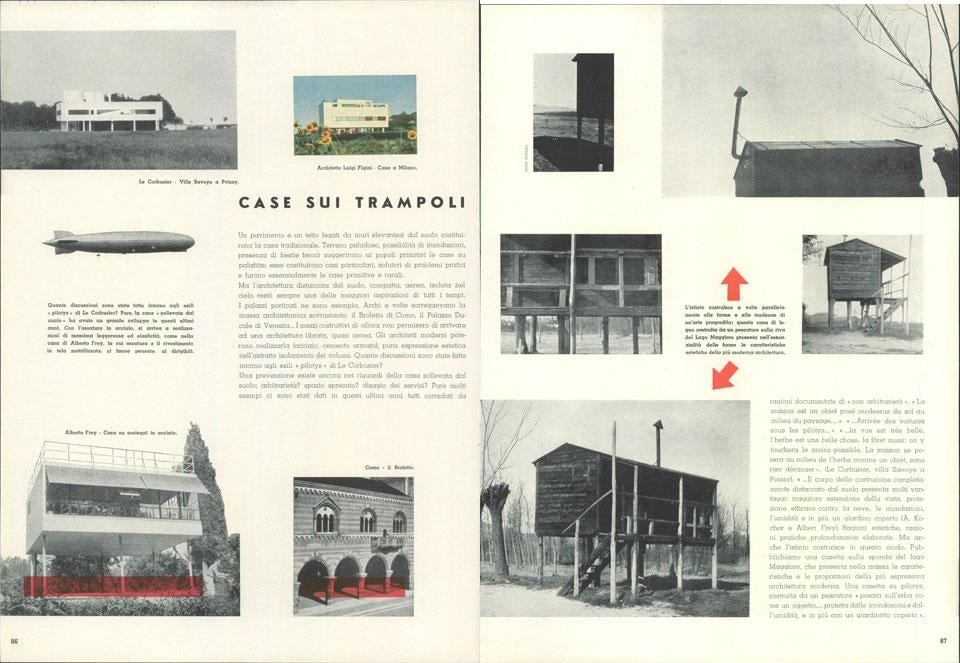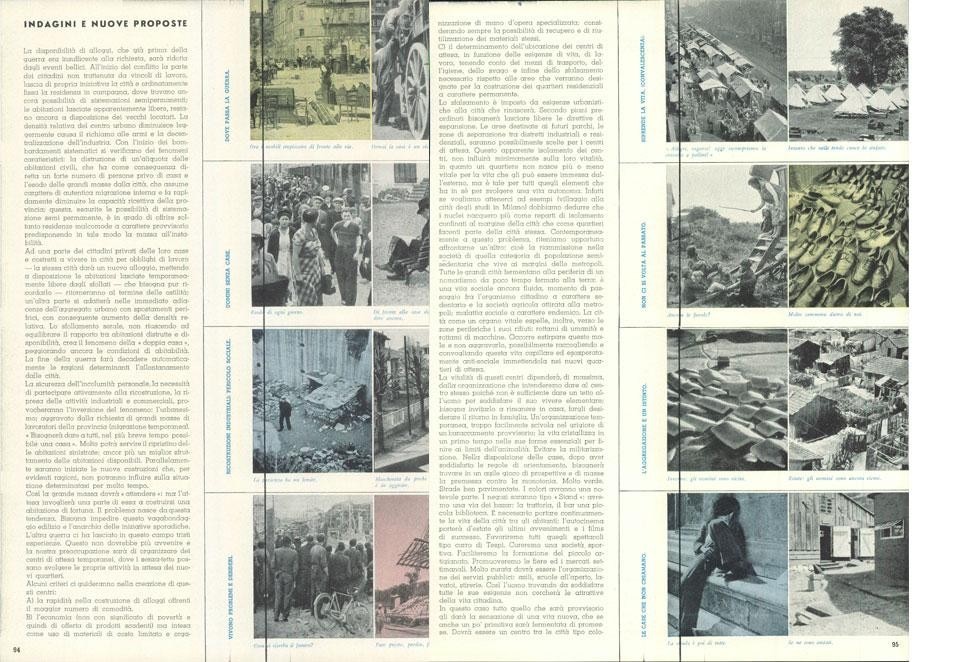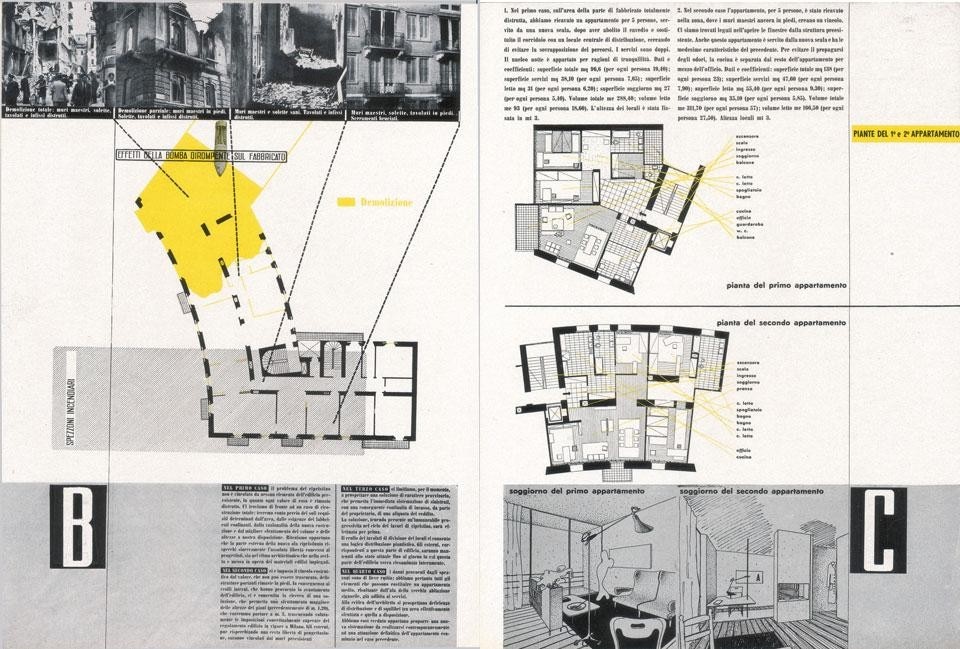During the 1930s, paralleling his artistic experience with the Futurist group in Milan, Bruno Munari also became a graphic designer and illustrator for magazines adopting an eclectic, but distinctly modern, position. When his collaboration with artist Riccardo "Ricas" Castagnedi ended in 1937 (after the latter joined the Domus publisher), Munari continued on a dual track working for publisher Bompiani and for the Montecatini group as a graphic designer.
In early 1939 he was hired as the art director for the new Mondadori magazines Grazia and Tempo where he remained until September 1943 when the war halted all publishing activities. At the end of the 1930s, Munari left the graphic avant-garde and advertising to embrace the possibilities offered by the emerging cultural industry, particularly the publishing sector. This shift put the artist/designer in an uncommon position for the time and in some ways anticipated the esteem he would gain on the professional scene only in the 1950s.
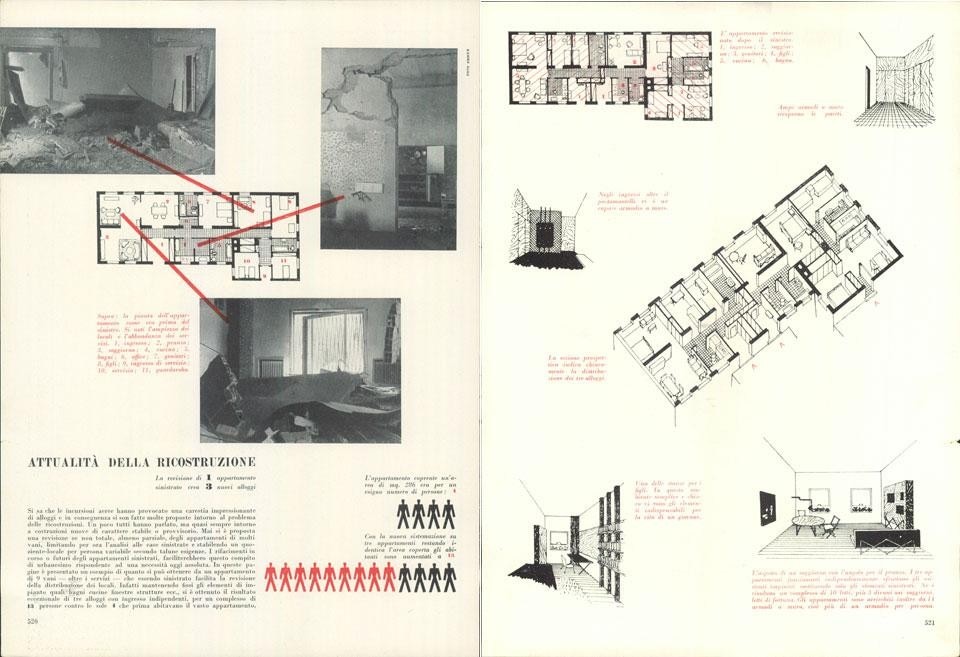
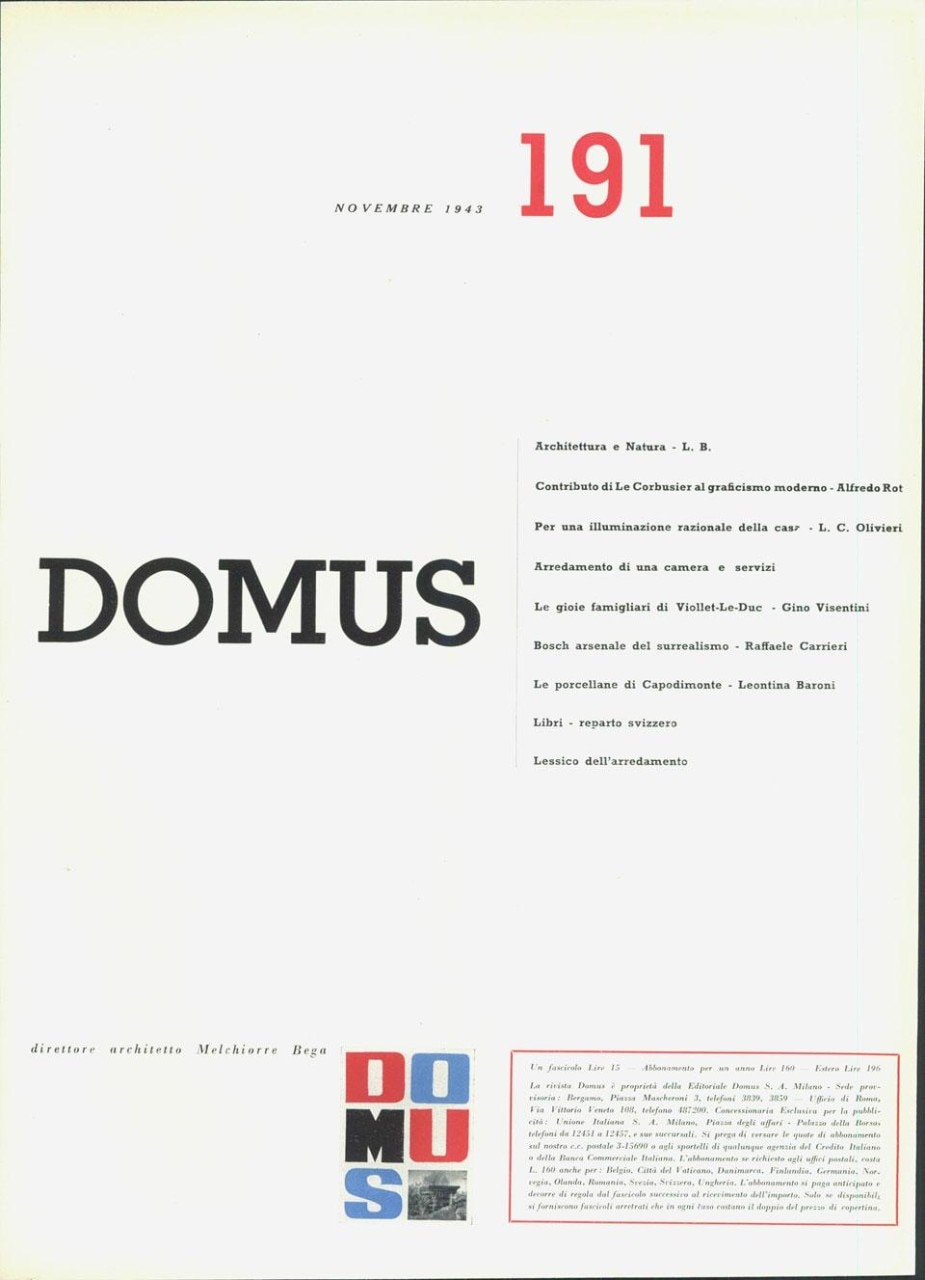
"It was 1944, a difficult and dark year. But Munari's spirit was always serene, indomitable, optimistic. He collaborated with Domus, which I was directing as a "trio" (...) We were few and Bruno was with us. (...) Bruno, at the very beginning of '44, proposed an analysis of the alternation of styles over time. The chart published in Domus in February of that year, indicated the oscillation of the line between strictly controlled art forms — Reason — and other highly convoluted forms — Fantasy. With that increasingly frequent alternation, he posed the question, "What will the new style be like?"" [1]
In addition to being responsible for the magazine's graphics, Munari was also the author of articles addressing issues relating to the aesthetic problems of reconstruction or issues projected, in any case, beyond the end of war
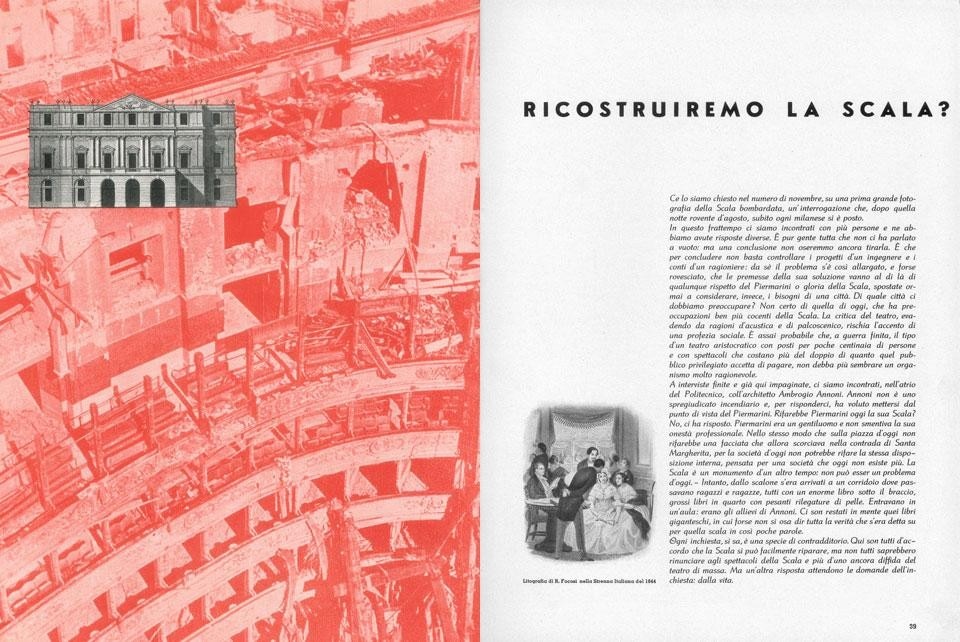
This "lightness" also appeared in the Domus layout where, beyond the simplicity of the typographical choices, the use of manual manipulation or images from old prints balanced the seriousness (and in some cases, the drama) of the chosen topics. With his experience at Mondadori, Munari worked predominantly on the double page, following an intuitive format having no predefined schemes; this allowed him great freedom in the combination of graphic elements (alternating painterly signs, halfcuts, textures and patterns), in the cropping of the photographs, in the use of overprinting and, in some cases, die-cutting.

Notes:
1. Carlo Pagani, in Beppe Finessi. Su Munari. 104. Milan: Abitare Segesta, 2005: pp.172–173.
